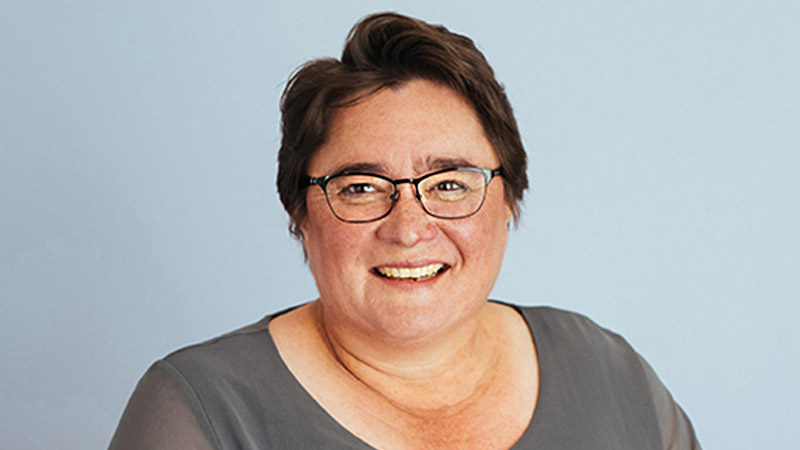SMSFs face structural challenges with large benefit transfers in pensions

SMSFs making large benefit payments can face several structural challenges with pensions that can shape the contribution and timing strategy for the fund, according to Heffron.
In a recent update, Heffron managing director Meg Heffron said there is a lot to consider in working out how to structure the payment for larger benefits from an SMSF. She warned that taking a very large pension amount is often the worst possible thing to do.
In an example, consider a couple where John (70) has a pension worth $1.65 million that he started several years ago.
“At the time he fully used up the limit we all have on the amount that can be converted to a super pension ($1.6 million at that time). John had a very large super balance at the time and so he had super money left over that he just left accumulating in his fund,” Ms Heffron said.
“That account (often referred to as an accumulation balance) is now worth $500,000. His wife Julie (71) also has a pension that’s currently worth $1.65 million but no accumulation balance. Note that in both cases, as they used their $1.6 million limit in full when they first started their pensions, they didn’t get an increase when the general limit was increased to $1.7 million from 1 July 2021.”
Ms Heffron noted that they’ve always taken the minimum pension in the past (and have already done so this year) but now want to withdraw an extra $400,000 in 2021-22.
“Fortunately, they are both over 65 and so have complete flexibility as to which account they take the extra payment from,” she noted.
“As a pension fund, their SMSF is entitled to a tax exemption on quite a lot of its investment income. Currently, around 87 per cent of all of the fund’s capital gains, rent, dividends, interest, managed fund distributions etc is treated as being exempt from tax. In practical terms, John and Julie’s fund usually receives a tax refund, thanks to their franking credits.
“The ‘87 per cent’ is provided by me as the fund’s actuary each year – I work out what proportion of their fund ‘belongs’ to their two pension accounts. If the pension accounts make up around 87 per cent of the total fund over the year, then 87 per cent (the actuarial percentage) of the investment income is exempt from tax.”
These tax rules make it much more attractive to take their large payment from John’s accumulation account rather than either of their pension accounts, according to Ms Heffron. It means that in future years, the proportion of fund income that will be exempt from tax will be closer to 97 per cent. In contrast, if they took this big payment from their pension accounts, the percentage would be 85 per cent.
“Would things be any different if Julie also had an accumulation account? In some ways yes – they would need to decide whether to take some of this payment from her accumulation account as well,” Ms Heffron noted.
“The factors to weigh up there are relative sizes – if John’s accumulation account is much bigger, it’s generally better to take it from him, and vice versa. If they are about the same, split the payment between them to even up their accumulation balances.
“This is driven by what happens when one of them dies. In Julie’s case, if John died, she may want to leave as much as possible of his super in their SMSF. But she can only do this if she is able to receive it as a pension.
“Her challenge is that there is a cap on how much she can convert to a pension ($1.6 million), inherited super counts towards this cap and she’s already used it anyway by starting her own pension. To some degree we can manage this.”
Ms Heffron observed that the strategy could be to switch off (fully commute) Julie’s own pension, which will mean $1.6 million is “reversed out” of the amounts that count towards her $1.6 million cap.
“She can fill that space with up to $1.65 million from John’s super. But anything else in John’s super will have to be paid out of the fund,” Ms Heffron continued.
“It would have been better for Julie if some or all of John’s accumulation balance had actually been in her name – she can leave her own super just accumulating in the fund but not John’s. Since we never know who is going to die first, keeping the accumulation accounts roughly equal hedges our bets.”
Ms Heffron added there is also the question if John’s accumulation account eventually gets down to $nil and they have another need for an extra payment.
The money will definitely need to come from one of their pensions or both. But even then, Ms Heffron noted there is a better answer than just a large pension payment.
“They should consider a partial commutation. Partial commutations feel exactly the same as a pension payment to anyone who receives one but with an important difference: a partial commutation ‘gives back’ some of the $1.6 million pension cap that has already been used up whereas a very large pension payment does not,” she explained.
“Let’s imagine, for example, that some time in the future John takes a partial commutation of $200,000 from his pension. He will then have an extra $200,000 ‘space’ in his pension cap. That could be really useful if (for example) he and Julie sell their home in the future and make special contributions known as ‘downsizer contributions’. He could convert $200,000 of his downsizer contribution into another pension. If he hadn’t created this space, the whole contribution would need to stay in an accumulation account.
“It’s also useful if Julie dies and he wants to leave as much as possible of her super in a pension that’s paid to him. Remember that inherited super counts towards the $1.6 million pension cap if it’s paid to the survivor as a pension.
“John can manage this by switching off some of his own pension to create ‘space’ to absorb a pension from Julie’s super. But the less he switches off the better. If he’s already created some space by taking partial commutations in the past, he’ll be able to leave more of his own pension in place.
“All in all, pensions are fantastic structures to have in place in an SMSF. But the careful thinking about structuring doesn’t end when the pension starts.”

Tony Zhang
Tony Zhang is a journalist at Accountants Daily, which is the leading source of news, strategy and educational content for professionals working in the accounting sector.
Since joining the Momentum Media team in 2020, Tony has written for a range of its publications including Lawyers Weekly, Adviser Innovation, ifa and SMSF Adviser. He has been full-time on Accountants Daily since September 2021.






